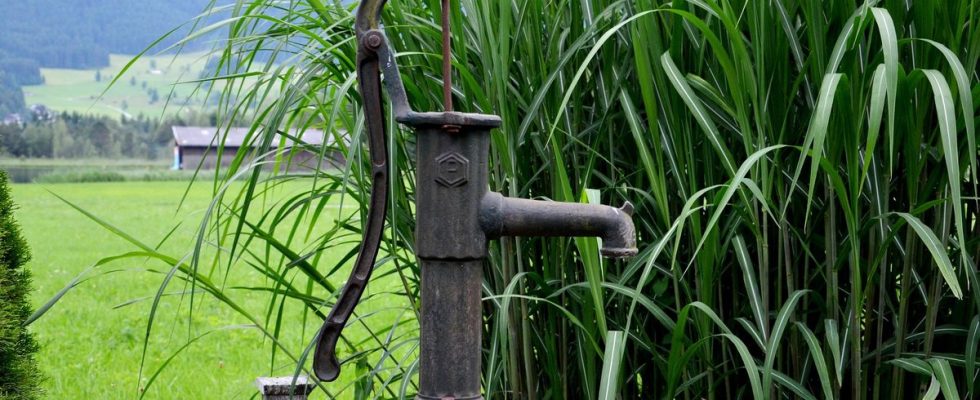Scorched lawns, suffering plants and a vegetable garden with cracked soil… Many French people experienced this situation in their garden last summer. A situation far from unprecedented: drought has become more and more pronounced in recent years with climate change. So what to do when water restrictions are multiplying everywhere? Some already use recuperators, aerial or buried, while others seek the precious resource further, in depth. In a well or borehole. Please note that this does not exempt them from complying with local decrees. But the possibility of having water almost any time, and without depending on the network, is significant today.
“There have always been wells in gardens, but there is now an additional interest in these devices. Because people want to be able to water,” confirms Christophe Sprauel, Deputy Managing Director at Speyser, one of the main companies specializing in drilling in Alsace. The region is particularly conducive to this: the Rhine ditch is home to the largest water table in Europe.
“In the Ried (the plain), you find water less than two meters underground. Afterwards, the further you go from the Rhine, the deeper you have to go, ”says Jean Puigvert. This dowser intervenes in the area but also elsewhere using maps, photographs etc. Then on the spot, “with a Y wand”. “I’m looking for the best place to dig and am able to tell you roughly what flow you can get,” says this non-scientist, unlike hydrogeologists. Jean Puigvert admits it quite willingly, “there are not only serious people among the dowsers”.
But there are everywhere as the French territory is full of exploitable groundwater. “Except maybe in the south-east of France where you have to go very deep, and in the Landes where the water can be brackish because of the old marshes. As a general rule, it is just not good to dig in soils composed of marl and clay”, he further specifies.
Just a declaration in town hall
Each particular land can still try his luck, without being taxed more. The Civil Code is clear: an owner is also clear from his basement up to 10 meters deep. The only rules to follow before starting: declare yourself to your town hall by filling out a Cerfa form at least one month before the work. In the case of an even larger well, another declaration will be necessary, this time with the Regional Directorate for the Environment, Planning and Housing (Dreal).
“It is purely declarative. They are almost never refused, unless they are in very precise water catchment areas”, specifies the driller, who has several teams dedicated to this specialty throughout the year. For industry, farmers and therefore individuals. Which two main possibilities are available to them if they have the idea to dig.
Well or borehole?
“Either we plant a steel tube, generally 32 mm, with a tip and holes at the end. We will sink it to five or six meters deep and then we will have to put a pump on the surface, manual or electric. It’s good for filling your watering cans but there won’t be a big flow, ”explains Christophe Sprauel. “Either we drill a real borehole, ten to fifteen meters long, with a 125 mm PVC tube. So there we can draw several m3 of water per hour with a submerged pump and powered automatic watering for example. »
Everything therefore depends on the intended use and the… budget allocated. “A hammered (or pierced) well is between 2,000 and 3,000 euros. A real borehole is more like 6,000 to 7,000 euros, still without the pump. For small needs, customers often prefer the first solution. With the risk that the resource will dry up at some point? “Not if you have a good dowser,” replies Jean Puigvert, obviously preaching for his parish. He is convinced, “people are going to dig more and more because they are looking for autonomy. The price of water will increase, as for electricity. »

